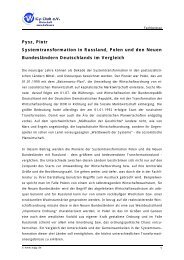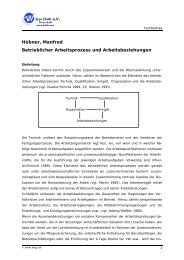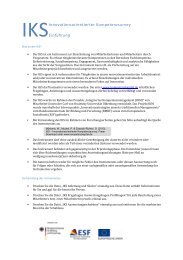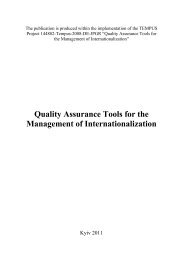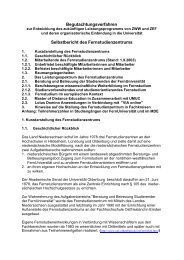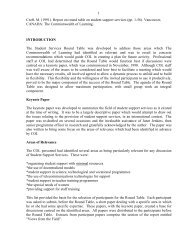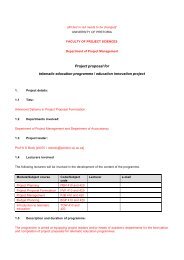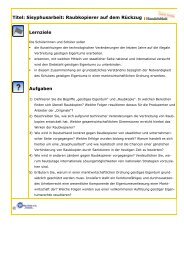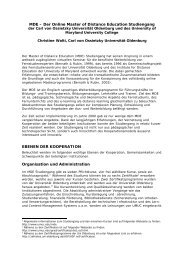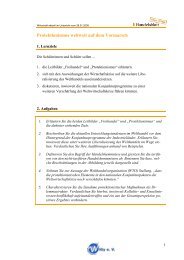Assessing the Costs and Benefits of Telelearning: A Case Study ...
Assessing the Costs and Benefits of Telelearning: A Case Study ...
Assessing the Costs and Benefits of Telelearning: A Case Study ...
Create successful ePaper yourself
Turn your PDF publications into a flip-book with our unique Google optimized e-Paper software.
Appendix A: Technology Background: WebCSILE<br />
Madeleine Butscheler<br />
General Notes on CSILE & WebSCILE Functions<br />
This section includes: descriptions <strong>of</strong> functions, developer, <strong>and</strong> pedagogical<br />
foundations; historical background; pedagogical evolutions; <strong>and</strong> ascribed benefits.<br />
Descriptions <strong>of</strong> Functions, Developer, & Pedagogical Foundations. CSILE<br />
s<strong>of</strong>tware provides a communal database for asynchronous student <strong>and</strong> teacher exchanges.<br />
Various "note" formats <strong>and</strong> supports are designed to enhance <strong>the</strong> potential <strong>of</strong> this<br />
communal database for collaborative knowledge-building.<br />
Use <strong>of</strong> <strong>the</strong> s<strong>of</strong>tware commonly takes <strong>the</strong> form <strong>of</strong> teachers creating topics, <strong>the</strong>mes,<br />
or principles with students. These are entered into <strong>the</strong> database as <strong>the</strong> starting point for a<br />
collaborative research project. Students can <strong>the</strong>n create a new note, add to an entry, build<br />
on, or start a new discussion. The s<strong>of</strong>tware accommodates both text <strong>and</strong> graphics. On<br />
<strong>the</strong> network, students using search <strong>and</strong> browse facilities are able to read <strong>and</strong> comment on<br />
each o<strong>the</strong>r’s ideas. Authors are notified when comments have been made. They also<br />
receive notification <strong>of</strong> changes to <strong>the</strong> database.<br />
The s<strong>of</strong>tware developers have identified <strong>the</strong> concept <strong>of</strong> creating, "Knowledge-<br />
Building Communities", as pivotal to developing <strong>and</strong> enhancing <strong>the</strong> s<strong>of</strong>tware. They<br />
emphasize <strong>the</strong> significance <strong>of</strong> a non-competitive research model that creates an<br />
environment in which groups both contribute <strong>the</strong>ir knowledge to a communal database<br />
<strong>and</strong> pursue lines <strong>of</strong> inquiry through discussion notes or messages. The intention to create<br />
a knowledge building community is reflected in <strong>the</strong> organization <strong>of</strong> notes. In addition to<br />
being linked to a topic or <strong>the</strong>me, <strong>the</strong> student labels <strong>the</strong> note in terms <strong>of</strong>, "Thinking Type",<br />
which includes several choices such as, "New Information", "Problem, I Need To<br />
Underst<strong>and</strong>", "My Theory", "What We Have Learned", <strong>and</strong> "Comments".<br />
The s<strong>of</strong>tware has been enhanced to allow for branching. This means students can<br />
attach subdiscussions to "I Need to Underst<strong>and</strong>" points in a main discussion. The<br />
enhancement is intended to encourage follow ups to problems, questions, or elements,<br />
which may have been raised, but not considered. For ease in reading <strong>and</strong> drafting<br />
purposes, in addition to <strong>the</strong> full screen display, <strong>the</strong> user can opt for <strong>the</strong> "split screen"<br />
view. This divides <strong>the</strong> screen in half with <strong>the</strong> reader being able to opt to view <strong>the</strong> notes in<br />
<strong>the</strong> upper or lower screens.<br />
Viewers can also opt to see <strong>the</strong> notes by "Thread", "Author", or "Date" <strong>and</strong> can<br />
retrieve <strong>the</strong>m by specifying <strong>the</strong> name <strong>of</strong> an author, a note topic, a note keyword, a<br />
thinking type <strong>and</strong> several o<strong>the</strong>r variables. There are also security features that may be<br />
attached requiring authorization to view entries.<br />
A "Knowledge Map" utility has recently been created to allow teachers <strong>and</strong><br />
students to assess what research has been ga<strong>the</strong>red, where <strong>the</strong>re are gaps, <strong>and</strong> what<br />
contributions <strong>the</strong> groups have made to <strong>the</strong>ir Knowledge-Building community. This<br />
utility displays all <strong>the</strong> notes, allowing students to adjust <strong>the</strong> position <strong>of</strong> <strong>the</strong>ir notes <strong>and</strong><br />
<strong>the</strong>reby consider <strong>the</strong> relationship <strong>of</strong> information as <strong>the</strong> Map is being built. The s<strong>of</strong>tware<br />
authors have introduced a range <strong>of</strong> shapes to represent different kinds <strong>of</strong> notes <strong>and</strong><br />
colored lines to depict differing relationships among notes. This utility also permits<br />
highlighting groups <strong>of</strong> notes for pattern identification <strong>and</strong> to keep up to date.<br />
59



